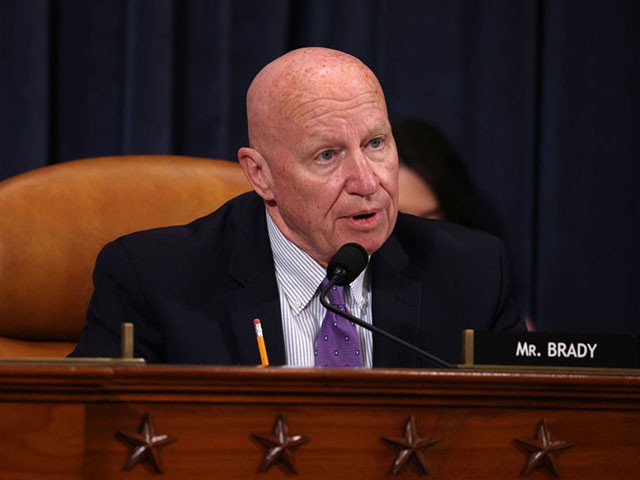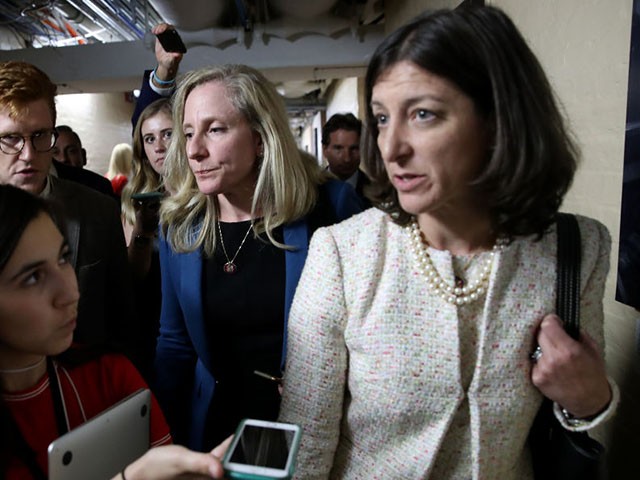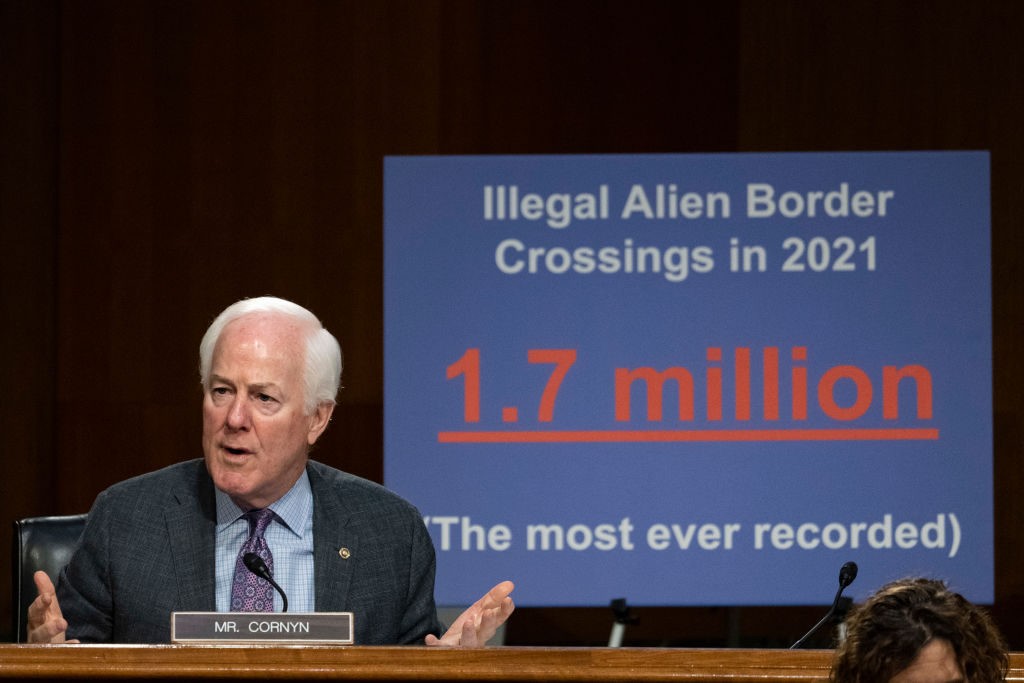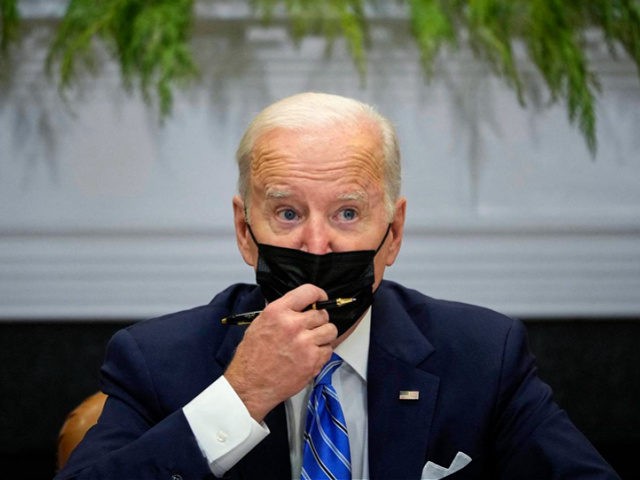THE DEMOCRAT PARTY'S PLATFORM FOR OPEN BORDERS AND DEPRESSED WAGES
BARACK OBAMA and ERIC HOLDER’S SABOTAGE OF HOMELAND SECURITY: The “zero tolerance” program was dismantled by Attorney General Erc Holder once it had successfully cut the transit of migrants by roughly 95 percent. Initially, officials made 140,000 arrests per year in the mid-2000s, but the northward flow dropped so much that officials only had to make 6,000 arrests in 2013, according to a 2014 letter by two pro-migration Senators, Sen. Jeff Flake and John McCain. NEIL MUNRO
The U.S. Chamber of Commerce exerts extraordinary influence in D.C.. Without an adequate number of ICE agents, employers who violate the immigration laws go undiscovered and unpunished. Additionally, all too many politicians from both parties are globalists and all too many members of Congress are lawyers. Some, in fact, are immigration lawyers who don’t see illegal aliens as a problem but as clients for their friends, or, perhaps for themselves when they leave Congress and resume their legal practices. MICHALE CUTLER FRONTPAG MAG
OBAMA - BIDENomics: "While America’s working and middle class have been subjected to compete for jobs against a constant flow of cheaper foreign workers — where more than 1.2 million mostly low-skilled immigrants are admitted to the country annually — the billionaire class has experienced historic salary gains." Sen. Josh Hawley
Exclusive — Kevin McCarthy: Chamber of Commerce ‘Left’ Republican Party ‘A Long Time Ago,’ Not Welcome Back
House GOP Leader Kevin McCarthy told Breitbart News that the U.S. Chamber of Commerce has no place in the modern Republican Party and that the big business lobby is not going to be welcome back if and when Republicans are back in power.
McCarthy’s comments came during the latest On The Hill long-form video special, taped in December at an Eastern Market establishment on Capitol Hill in Washington, DC.
“The Chamber left the party a long time ago,” McCarthy said. “In the last election, the Chamber supported Democrats. The Chamber gave a higher score to Democrats who are voting for this policy because they signed some letter then voted the opposite of what the letter said than Kevin Brady who was chair of Ways and Means and brought us the tax cuts. I just assume they have as much influence in the future as they do now—none. Our responsibility is to the American public. That is who’s going to drive it. If special interests are the American public then they’ll have a say, but it’s the American public we’re going to.”

House Ways and Means Committee ranking member Kevin Brady (R-TX) speaks during a hearing on Capitol Hill on May 13, 2021, in Washington, DC. (Anna Moneymaker/Getty Images)
McCarthy is correct that the Chamber backed several vulnerable Democrats in the 2020 congressional elections, endorsing them over Republicans and perhaps preserving the Democrat majority in the process. Had Republicans flipped just a handful more seats—they flipped a net 15 from Democrats in 2020—they would have the majority instead of the Democrats right now. The Chamber, which endorsed 23 House Democrats in 2020, may have made the difference in helping keep the Democrats in the majority as some of the members the business group endorsed survived tight reelection races.
If five or more of the Chamber-backed Democrats who survived in 2020, like Reps. Cindy Axne (D-IA), Abigail Spanberger (D-VA), Elaine Luria (D-VA), Susie Lee (D-NV), Dean Phillips (D-MN), or Angie Craig (D-MN) among others, did not survive their reelection bids then the Republicans would be in the U.S. House majority right now.

Reps. Abigail Spanberger and Elaine Luria are trailed by reporters after leaving a House Democratic caucus meeting at the U.S. Capitol September 24, 2019, in Washington, DC. (Win McNamee/Getty Images)
McCarthy’s comments on this come as more broadly the business community and Republicans have grown apart, especially in the wake of the January 6, 2021, riot at the Capitol. In the immediate aftermath of that event, many large corporations cut off Republicans who challenged the 2020 election results that day. McCarthy went on to generally agree that businesses getting overtly political is not good for their bottom line.
“The thing I see that’s happening in the corporate world is they’re becoming woke,” McCarthy said. “Their philosophy should be running their business, not going day to day about what’s happening in politics. They have a right to do what they want, but I don’t think they’ll be as productive if they lose sight of why the shareholders buy their stock which is to run a business and efficiency of that.”
Watch the full-length interview with Kevin McCarthy:
Matthew Perdie / Breitbart News, Jack Knudsen / Breitbart News
Almost 685,000 foreign visitors stayed in the United States past their legally required departure date in the 12 months up to September 30, 2020, according to a report released January 10 by the Department of Homeland Security (DHS).
Yet President Joe Biden’s appointees at DHS — left by secretary Alejandro Mayorkas — are now reducing protections against “overstay” illegal migrants, many of whom take jobs from Americans, says Jessica Vaughan, the director of Policy Studies for the Center for Immigration Studies:
Much of the attention of policymakers is on the border itself, the land border, and not enough on the side doors through which people come with a visa but then end up staying here illegally. These overstayers are a very significant chunk of the illegal population. We don’t know exactly how many there are, but we know it’s at least 40 percent [of the illegal population, and] they tend to be more white-collar workers because they had to qualify for a [visitor or work] visa in the first place.
President Donald Trump and his deputies launched programs to reduce the overstay population, she added. But Mayorkas and his allies have rolled back those protections, such as penalties for overstaying graduates from U.S. colleges, she said:
Now, we have Biden loosening standards for issuing the non-immigrant visas and broadcasting that immigration enforcement in the interior area has been nearly snuffed out by policy. So we should be very concerned that for the foreseeable future, there are going to be even more people trying to get these visas to get into the country because they know that if they get here, they’ll be able to stay in all likelihood. I expect the problem to get much worse.
In December, two GOP Senators charged that officials delayed the release of the September 2020 report. The purpose of the delay was to protect the Democrats’ unpopular amnesty proposals within the pending Build Back Better spending bill, the two Senators claimed.
In 2021, Biden and his deputies allowed roughly 1.5 million migrants into the United States — or almost one migrant for every two children born during the year. That huge population included roughly 500,000 illegals, a few hundred thousand legal immigrants and visa workers, at least 50,000 refugees, plus 671,000 migrants who were allowed across the southern border under an expanding variety of legal pretexts, such as asylum or family reunification.
The additional numbers for the visa overstays in Biden’s first eight months will not be released until at least September 2022.

A migrant from Colombia injects himself with insulin after crossing the United States and Mexico border to turn himself over to authorities on May 13, 2021 in Yuma, Arizona. (RINGO CHIU/AFP via Getty Images)
GOP legislators rarely complain about — or vote against — visa overstays, partly because the overstay migrants help businesses by serving as workers, consumers, and renters. Instead, GOP leaders prefer to spotlight the border chaos to help boost the election-day turnout of their electoral base.
The 2020 visa overstay numbers are unique. They include numbers from five months before the coro0nanvirus disaster and then from seven months when few visitors were allowed and many visitors were in no rush to return home. The DHS report says:
Due to the COVID-19 outbreak, the FY 2020 data represents an anomaly when compared with the prevailing trend of decreasing Expected Departures and Overstay. Expected Departures in FY 2020 (46,195,116) were 17.40 percent lower than in FY 2019 (55,928,990) … CBP calculated a total overstay rate of 1.48 percent, or 684,499 overstay events.
Roughly one-third of the overstays return home after one year, the report noted:
At the end of FY 2019 [30 September 2019], the overall Suspected In-Country Overstay number – i.e., those for whom the Department did not have evidence of a departure or transition to another immigration status – was 676,422 or 1.03 percent. [One year later] As of September 30, 2020 … the FY 2019 Suspected In-Country Overstay rate 0.59 percent.
Almost 28,000 foreign workers and student/workers overstayed their visas:
For nonimmigrants who entered on a student or exchange visitor visa (F, M, or J visa), the FY 2020 Suspected In-Country Overstay rate is 1.55 percent of the 1,801,550 students and exchange visitors scheduled to complete their program in the United States.
The report noted that 19,044 Indians overstayed their visas, including roughly 4,112 with F, M, or J work-eligible visas. That number is significant because Indians provide a huge share of the temporary foreign workers in Fortune 500 jobs — and a large share of the white-collar illegal population.
The overstays also include 73,000 Mexicans:
For Mexico, the FY 2020 Suspected In-Country Overstay rate for those traveling through air and sea POEs is 2.39 percent of 3,055,056 expected departures. This represents overstays by people who arrived by air and sea POEs and does not include overstays by people who arrived by land.
The report hid the data about overstays by foreign workers who legally enter B-1/B-2 visas but then illegally take jobs. The rate of B-1/B-2 overstays is high for visitors from Chile, France, Poland, China, Egypt, the Philippines.
Poor countries had the highest share of overstays, although they also contributed few visitors. This category includes Sudan, Eritrea, Nepal, Afghanistan, Benin, Burundi, and Chad.
Many polls show that Americans want to like immigrants and immigration. But the bipartisan federal government has exploited that openness since 1990 to extract tens of millions of migrants from poor countries to boost U.S. businesses as workers, consumers, and renters.

Sen. John Cornyn (R-TX) questions Department of Homeland Security Secretary Alejandro Mayorkas during a Senate Judiciary Committee hearing on oversight of the Department of Homeland Security, on Capitol Hill November 16, 2021 in Washington, DC. (Drew Angerer/Getty Images)
That economic strategy is harmful to ordinary Americans: It cuts their career opportunities and their wages while it also raises their housing costs.
The strategy also curbs Americans’ productivity, shrinks their political clout, widens regional wealth gaps, radicalizes their democratic, compromise-promoting civic culture, and allows elites to ignore despairing Americans at the bottom of society.
Unsurprisingly, a wide variety of little-publicized polls do show deep and broad opposition to labor migration and the inflow of temporary contract workers into jobs sought by young U.S. graduates.
This opposition is growing, anti-establishment, multiracial, cross-sex, non-racist, class-based, bipartisan, rational, persistent, and recognizes the solidarity that Americans owe to each other.
Chamber of Commerce CEO: Flood U.S. with Twice as Much Legal Immigration, Amnesty for Illegal Aliens

The United States Chamber of Commerce CEO Suzanne Clark says the U.S. ought to import twice as many foreign workers and provide amnesty to illegal aliens for the purpose of inflating the labor market, providing business with an endless flow of cheap labor and more consumers.
During a speech on Tuesday, Clark stated that the Chamber’s official position is to double the level of legal immigration. Such a policy would bring anywhere from two to four million legal immigrants to the U.S. every year — an annual foreign-born population nearly six times the size of Boston, Massachusetts.
The goal, Clark said, is to inflate the U.S. labor market with as many workers as possible to decrease the cost of labor for businesses, which lowers wages, and to create more consumers to whom companies can sell products. Real estate investors would also be massive benefactors as high immigration levels drive up the costs of rent and housing.
Amnesty for illegal aliens, which would immediately flood the U.S. labor market with newly legalized foreign workers that America’s working class would be most likely have to compete against for jobs, is also a priority of the Chamber of Commerce, Clark said.
“We have to grow our workforce if we want to grow our economy,” Clark said:
So, who wants to put their talent to work and pursue their dreams in a dynamic economy flush with opportunity? Immigrants of every skill level. Where are they going to go? The U.S. or Canada? Let’s make it Austin or Boston, Atlanta or Denver, or any of the countless U.S. destinations in search of top talent. [Emphasis added]
We must double the number of people legally immigrating to the U.S. And we must create a permanent solution for the “dreamers”—those young men and women who know no other home and who contribute to their communities, but whose legal status is in limbo. [Emphasis added]
Clark’s remarks come as 12 million Americans, all of whom want full-time jobs, remain unemployed and another nearly four million Americans are underemployed but want full-time work.
In an exclusive interview with Breitbart News this week, House Minority Leader Kevin McCarthy (R-CA) blasted the Chamber of Commerce for leaving “the [Republican] Party a long time ago.”
“In the last election, the Chamber supported Democrats … I just assume they have as much influence in the future as they do now — none,” McCarthy said. “Our responsibility is to the American public. That is who’s going to drive it. If special interests are the American public then they’ll have a say, but it’s the American public we’re going to.”
A flooded labor market from mass legal immigration to the U.S. has had a devastating impact on the nation’s working and middle class while redistributing wealth to the highest earners and big businesses.
While creating an economy that tilts in favor of employers, the economic model helped keep wages stagnate for decades. Between 1979 to 2013, wage growth for the bottom 90 percent of Americans grew just 15 percent. Meanwhile, wage growth for the top one percent of Americans was nearly 140 percent higher.
Researchers have found that a flooded labor market can easily diminish job opportunities and wages for Americans.
One particular study by the Center for Immigration Studies’ Steven Camarota revealed that for every one percent increase in the immigrant portion of an American workers’ occupation, their weekly wages are cut by perhaps 0.5 percent. This means the average native-born American worker today has his weekly wages reduced by potentially 8.75 percent as more than 17 percent of the workforce is foreign-born.
Already, the U.S. gives out 1.2 million green cards to foreign nationals annually. In addition, about 1.5 million temporary work visas are rewarded to foreign nationals to take American jobs. The massive waves of legal immigration have led to the highest level of foreign workers in the U.S. economy in decades, making up at least 17.5 percent of the workforce.
Legal immigration levels have driven the U.S. population to a record 331.9 million.
John Binder is a reporter for Breitbart News. Email him at jbinder@breitbart.com. Follow him on Twitter here.
Carney: The Great Quarantine Will Sideline Millions of American Workers and Make Bidenflation Worse

Get ready for omiflation.
Our public health policy is geared around containing the spread of the virus and isolating both the infected and the exposed. As a result, ultra contagious omicron’s impact on the economy may be even greater than the deadlier Delta variant. And the biggest effect is going to be an exacerbation of our inflation crisis.
The path to inflation is quarantines and the labor supply. Millions of workers are likely to be sidelined because they are infected or quarantined due to close contact with someone who is infected. That will constrain production while doing little to consumption. It’s a textbook recipe for more inflation.
Why is Omicron likely be a big drag on the labor supply?
Public health recommendations and business policies require workers who test positive but have no symptoms to quarantine for five days. The CDC also recommends that anyone exposed to someone who has tested positive also quarantine for five days, unless they have had their second mRNA shot within the last six months (or the Johnson & Johnson shot within the last two months) or gotten the booster. While it is hard to track down vaccinations by vintages, only about 21 percent of Americans have received a booster. So each positive case among workers will cause a number of workers to be out for a week.
So how many workers could be forced to quarantine? Analysts at Bank of America recently worked out the math to show that if infections peak at two million per day and each positive case quarantines two other people, roughly 30 million could be quarantined per day. Now, many of those will be able to work from home, and some will not be in the workforce (children and retirees, for example). By the Bank of America analysts’ calculations, this works out to roughly 4.2 million in-person workers in quarantine absence on any given day. That’s nearly 2.5 percent of the U.S. labor force sidelined by infection or close contact quarantine. If the new case numbers or the close contact rate are higher, obviously the effect will be even larger.
That’s likely to pull down economic growth. Keep in mind that Gross Domestic Product measures economic output. So with that many workers unable to work, output falls. But since many of those workers remain on the payroll, demand should not be hit as hard (although it could shift as sidelined workers’ consumption patterns adjust to being at home rather than commuting). Fewer goods and services meeting the same level of demand is guaranteed to produce inflation. Heaping that inflationary pressure on an economy already suffering from rising prices and rising inflation expectations could set the stage for much more inflation than is currently built into most economic projections.
Note that the labor shortage will be almost invisible in the classical employment statistics. Quarantined workers still get counted as employed, and so they will not show up in either the weekly jobless numbers or the monthly unemployment figures. Evidence for this can be seen in the jobless claims figure released Thursday. Claims moved up just 7,000 to 207,000 despite the new case average topping 500,000 on the way to Monday’s one million new cases.
Employers may attempt to temporarily increase payrolls to cope with sidelined workers, but that will be hard given the already tight labor market. With job openings just below their recent record high, it would take Herculean efforts to bring on new workers as temps. Our guess would be that the disruptions caused by mass quarantines will make hiring harder in other ways as well. Quarantined workers cannot interview potential new hires in person, train the new recruits, or even attend meetings to discuss hiring. The quarantines will likely not just throw sands into the gears of production but also into the gears of hiring. So it is possible that there could be a slowdown in job growth and hiring due to omicron.
This week, the Department of Labor will release inflation figures that are expected to show that inflation picked up pace in December. The further spread of omicron will mean the January figures are likely to be even worse.
It’s very likely that inflation will keep on getting worse in the months to come, defying predictions that it would fade this year. That may force the Federal to act even more forcibly than expected. Goldman Sachs, for example, recently updated its forecast to show four rate hikes this year. Yet even that forecast is based on a somewhat benign inflation projection. If inflation keeps climbing, five or six hikes could be in our future.
All of which lines up an interesting scenario for the mid-term elections, now only 11 months away. Stocks could be down significantly due to Fed tightening, lower-income households feeling much worse off because of rising prices, and a Federal Reserve run by a squad of Biden appointees (chair Jerome Powell now counts as a Biden guy) hiking interest rates to make up for staying too loose for too long. The question in that scenario would be which party’s candidates can plausibly claim the populist mantle to run against the spendthrift, loose-money elites who broke the economy.
There's Nothing Compassionate About an Eight-Fold Surge in Refugee Admissions
By Don Barnett
Townhall
The Biden administration has cast its eight-fold increase of the refugee resettlement cap as a compassionate move. But in reality, it's callous. It worsens the economic burdens facing working-class Americans, while distracting from relief programs that'd help far more refugees.
|
|
US Fed chief worried about “wages push” in coming year
The small uptick in wages of US workers, driven by the competition between businesses to find new employees, has set off shockwaves throughout corporate America. In recent days, top economic policy makers, Wall Street analysts and the media have warned that the biggest danger to the capitalist economy is not the Omicron variant, but a potential “wages push” by workers next year, which could upend the entire financial system.
At a press conference last week, Jerome Powell, the chairman of the US Federal Reserve, said nothing about the horrific loss of life during the pandemic, noting only that the Delta variant “had an effect of slowing down hiring” and “hurt the process of the global supply chains getting worked out.” Dismissing the dangers of the more infectious Omicron variant, he added, “I do think wave upon wave, people are learning to live with this.”
Powell’s remarks followed the meeting of the 12-member Federal Open Market Committee, which voted to carry out three quarter-point interest rate hikes in 2022 and begin tapering its asset purchases to address inflationary pressures in the US economy. The announcement was a reversal from their position nine months ago, when Fed officials indicated that there would be no rate increases until 2024.
Powell made clear that the Fed’s concern over inflation was not the impact that the 6.8 percent consumer price hike—the highest in four decades—is having on workers’ living standards. Instead, he said, wages had “risen briskly” in recent months, and it has become clear to the central bankers that increasing wages are “both larger in [their] effect on inflation and more persistent.”
Powell said the decisive factor behind the decision to raise interest rates was the October 29 Employment Cost Index (ECI) published by the Bureau of Labor Statistics, which, he said, showed a “very high” 5.7 percent rise in hourly labor costs over the last three months.
The Fed and various economic forecasters had originally thought rising wages would be temporary and transitory. They expected that the Biden administration’s cutoff of pandemic stimulus checks and extended unemployment benefits would be enough to force workers back into the labor market and relieve “inflationary pressures.”
But the effort to use economic pressure to force workers back into infected factories and workplaces had largely failed, Powell lamented. “The important metric that has been disappointing really has been labor force participation, of course, where we had widely thought, I had certainly thought that last fall as unemployment insurance ran out, as vaccinations increased, that schools reopened, that we would see a significant surge, if you will, or at least a surge in labor force participation.” While there had been “some improvement,” he said, “it feels likely now that the return to higher participation is going to take longer.”
He continued, “The ratio of job openings, for example, to vacancies is at all-time highs, quits—the wages, all those things are even hotter.” For “certain people,” he said, “they don’t want to go back in the labor force because either they’re medically vulnerable or they’re not comfortable going back while COVID is still everywhere. That’s one thing. The lack of availability of childcare made for caretakers is certainly part of it, not just for children, but for older people.”
While acknowledging “wages are not a big part of the high inflation story that we’re seeing,” Powell warned, “if you had something where real wages were persistently above productivity growth, that puts upward pressure on firms, and they raise prices… We don’t see that yet. But with the kind of hot labor market readings—wages we’re seeing, it’s something that we’re watching.”
“The labor market is by so many measures hotter than it ever ran in the last expansion,” Powell said. “You know, usually, in every other expansion, it’s that there aren’t enough jobs and people can’t find jobs,” he said, adding, “What we need is another long expansion, like the ones we have been having over the last 40 years.”
Despite a fall in the official jobless rate, another 4.2 million workers quit their jobs in October. As of November 2021, the labor-force participation rate of US adults aged 65 and over was 7.2 percent lower than in February 2020, while that of “prime age” adults aged 25 to 54 declined by 1.3 percent, according to Marketplace. As part of the so-called “Great Resignation,” around three million more workers have retired since the start of the pandemic than expected based on prior-year trends, according to estimates by the Federal Reserve Bank of St. Louis.
The “tight labor market” has provided workers—particularly the lowest-paid—with greater leverage to demand higher wages. According to the Atlanta Federal Reserve, the average wage increase for job switchers was 5.1 percent in October, measured as a three-month moving average of median wage growth, compared to 3.7 percent for those who remained at the same job.
Despite the dire warnings by the Fed, pay hikes have been extremely limited, and 70 percent of all workers have actually suffered a cut in real pay. The Bureau of Labor Statistics reported earlier this month that average hourly earnings for private-sector production and nonsupervisory employees rose by only 12 cents, to $26.40. All told over the past 12 months, average hourly earnings have only increased by 4.8 percent.
When inflation is factored in, real wages have gone down 1.9 percent over the past year, according to the BLS. From October to November, real average hourly earnings for all employees decreased 0.4 percent. Since the start of the pandemic in February 2020, real wages have declined roughly 1 percent, as Jason Furman, an economist and professor at Harvard University’s John F. Kennedy School of Government, told Fortune.
As far as wages outstripping workers’ productivity, the exact opposite has been the case for the last four decades. Since 1979, real wages for non-supervisory workers have increased by only 17 percent, while productivity has risen by 61.8 percent, or 3.5 times faster.
The repeated references by the mouthpieces of the financial oligarchy to the dangers of a “wage-price spiral” is a frightened reference to the explosive wave of strikes by workers in the 1970s to protect their living standards from ravages of inflation, driven by the global decline in the position of American capitalism. Between 1969 and 1979, there were 3,300 strikes involving more than 1,000 workers, or an average of 300 a year. This reached a high point of 424 strikes, involving a total of 1.8 million workers, in 1974, when the inflation rate hit 11 percent.
The American ruling class responded with the “Volcker shock” in 1979, when Fed chair Paul Volcker raised the prime rate to 21.5 percent, provoking the worst recession since the Great Depression and “wringing inflation” out of the economy through mass unemployment, union busting and deep wage cuts.
The economic “expansions” over the last four decades that Powell praises were based on a massive transfer of wealth from the working class to the super-rich. The run up on the stock market, which has far more to do with rising inflation than wages, has been fueled by the Fed’s policy of “quantitative easing,” i.e., the provision of virtually free money to financial speculators.
Between 2009 and 2020, with the full backing of the AFL-CIO trade unions, raises averaged 2.8 percent a year, barely staying ahead of a 1-2 percent annual inflation rate. This has continued since the pandemic. Non-union workers have seen their wages climb at a much faster rate than unionized workers, according to the BLS. In contract after contract, the unions have accepted wage increases well below the rate of inflation, further eroding workers’ living standards.
At the same time, the unions have kept workers on the job as the deadly SARS-CoV-2 virus has spread through factories, schools and other workplaces, costing the lives of thousands of educators, transit and health care workers and private sector workers in food processing, logistics, manufacturing and other industries. Employers, with the full backing of the unions, have responded to the labor shortage by imposing inhumane levels of overtime, undermining workers’ health and further exposing them to COVID-19.
This has been a major factor in the rank-and-file revolt against the corporatist unions and the wave of strikes this year, from Volvo Trucks and Frito-Lay to John Deere and Kellogg’s. Although these and other companies are making record profits, the ruling class is terrified that the growth of working-class resistance will bring down the entire financial house of cards built up through massive corporate debt—which has swelled by $1.3 trillion since the pandemic—and the inflation of stock market values.
The payoff of the $32 trillion in debt taken on by Fed and the world’s central banks requires the continued extraction of surplus value from the labor of the working class. This is what lies behind the criminal policies of keeping schools and non-essential businesses open as the pandemic rampages out of control.
The Fed’s proposed rate hikes are meant to be a preemptive attack against the supposed “inflationary” demands of workers even as the central banks policies have contributed to a $5.5 trillion surge in the wealth of the world’s billionaires during the pandemic. Working-class opposition in the US and throughout the world, however, is only in its initial phase. In the coming year, the mass struggles against the sacrifice of millions of lives to corporate profit will take an ever more explosive and consciously anti-capitalist form
Data: Joe Biden Imports Almost 1.5 Million Migrants in Eight Months
26 John Moore/Getty
John Moore/Getty
20 Dec 202164
7:00
President Joe Biden’s government has inflated the foreign population in the United States to record levels by adding almost 1.5 million migrants in just eight months, according to census data reviewed by the Center for Immigration Studies (CIS).
The policy added roughly one legal or illegal migrant for every three Americans who enter the workforce during the same period.
The resulting inflow brings the official estimate of the foreign population up to 46.2 million. That percentage means that one-in-seven of the people living in the United States were born elsewhere.
The massive inflow will help Biden’s deputies and their business allies to re-inflate the bubble of cheap labor that has suppressed Americans’ wages and salaries since 1990.
That bubble burst in early 2020 when President Donald Trump shut the borders, froze multiple visa-worker programs, and reduced the foreign population by roughly 1.2 million.
That low-migration policy allowed many Americans to get wage raises and workplace benefits from employers who were used to a plentiful supply of cheap migrant labor.

A statement from the CIS reported:
There were a total of 46.2 million immigrants (legal and illegal) in the country in November 2021. This is the largest number of immigrants ever recorded in any government survey or census going back to 1850.
As a share of the total U.S. population, immigrants were 14.2 percent in November 2021 — the highest percentage in 111 years. The immigrant share of the population has tripled since 1970 and has come close to doubling since 1990.
The number of immigrants in the country grew by 1.5 million between November 2020 and November of this year after declining by 1.2 million between February and September 2020 as a result of Covid-19 restrictions.
“Since President Biden’s election, the total legal and illegal immigrant population has grown spectacularly,” said Steven Camarota, the research director at CIS. “The ongoing border surge, the ending of nearly all interior enforcement, and the ramping up of legal immigration are clearly showing up in the data,” he added.
About 500,000 of the extra migrants are job-seeking “got-aways” illegals who were allowed to sneak across the U.S. southern border by Biden’s pro-migration appointees at the Department of Homeland Security.
Another 500,000 migrants were invited in during the eight months up to October 1 under a variety of legal pretexts, such as requests for asylum or requests to reunify with family members in the United States. In contrast, Trump deputies admitted roughly 55,000 migrants before Biden’s February 20 takeover.

Biden’s deputies — chiefly, pro-migration zealot DHS secretary Alejandro Mayorkas — have also admitted many legal immigrants, plus at least 50,000 Afghans, plus many white-collar visa workers, and have also reduced deportations by roughly 90 percent.
The total number of arrivals recorded by border officials is greater than the census bureau’s estimated population increase.
The huge inflow of foreign workers, consumers, and renters will make it more difficult for ordinary Americans to earn good wages and to afford decent housing.
Breitbart reported December 20 on the pocketbook impact of the government’s immigration policy:
Hasit Patel is an Indian legal immigrant who operates the two-star La Quinta franchise budget hotel where [Monique] Rolle worked for roughly $8.50 an hour before she took her $15-an-hour job at Target.
Patel’s business plan depended on cheap migrant labor, according to what he told the Washington Post:
“[His] struggle to find [replacement] labor felt like a blow to his whole notion of what made America great. An immigrant from India, he believed that the health of the U.S. economy was protected by a constant refreshing of the workforce, an injection of striving immigrants willing to take on some of the unpleasant jobs that many Americans are loath to do — like cleaning [his] hotel rooms.”
Patel’s expectation was rational: From 1990 to 2017, the federal government inflated the labor force by adding roughly one migrant — both legal and illegal — for every three Americans who joined the workforce.
That economic policy of inflating the labor supply slowed in the 2008 crash and came to a sudden halt in 2020 when President Donald Trump closed the borders to slow the spread of the coronavirus. Overall, the federal government imported 5 million fewer foreigners from 2010 to 2020 — including 3 million fewer from 2017 to 2020 — compared to prior decades, according to recent reports.
The Post report continued:
“I can’t compete with the [$15-per-hour] warehouses for wages,” Patel said. “The government should let us get people from India, even just for six months. The government has to realize there are certain job categories that American people don’t want to do anymore.”
The Post did not explain how Patel would import temporary workers from caste-divided India, where half the workers earn less than $100 per week. But the B-1/B-2 visa is used by some Indians to legally visit for six months — and illegally work while they are in the United States.
So, without a supply of very cheap workers from his home country, Patel reluctantly raised Americans’ wages “from $8.50 to nearly $11 an hour and offered more flexible schedules,” the Post reported.
Meanwhile, the GOP leadership has focused criticism on the migrants who cross the southern border. and has largely refused to spotlight the pocketbook damage to Americans caused by the massive inflow of foreign workers, consumers, and renters.

Many polls show that labor migration is deeply unpopular because it damages ordinary Americans’ career opportunities, cuts their wages, and raises their rents.
Migration also curbs Americans’ productivity, shrinks their political clout, widens regional wealth gaps, radicalizes their democratic, compromise-promoting civic culture, and allows elites to ignore despairing Americans at the bottom of society.
For many years, a wide variety of polls has shown deep and broad opposition to labor migration and the inflow of temporary contract workers into jobs sought by young U.S. graduates. This opposition is multiracial, cross-sex, non-racist, class-based, bipartisan, rational, persistent, and recognizes the solidarity Americans owe to each other.
Gov. Abbott working to 'secure the sovereignty' of America with border wall
https://www.youtube.com/watch?v=V3MFaL2Rz9o
“Joe Biden is great on immigration. I guess depends on your perspective. If you’re a human trafficker, or drug dealer, or all those migrants wearing the Biden let us in shirts, you’d give him an A-plus, plus, but the American people would give him an F. The crisis we said our border was not only entirely predictable. It was predicted. I predicted it last fall that if you campaign all year long on open borders, amnesty, and health care for illegals, you’re going to get more migrants at the border. That’s exactly what’s happened every month since the election.” SEN. TOM COTTON
From April 2020 to April 2021, more than 100,000 Americans died from drug overdoses, according to data from the National Center for Health Statistics. An overwhelming majority of those deaths came from opioids, and fentanyl smuggling has surged at the southern border since the start of Joe Biden's presidency.Joseph Simonson and Collin Anderson
Officials in Mexico believe the tide of laundered money could be as high as $50bn per year, a sum equal to about three per cent of Mexico's legitimate economy -- more than all its oil exports or spending on key social programmes. Internationally, money laundering represents between two and five per cent of global GDP, or between $800bn and $2tn annually, according to the UNODC.
THE BIDEN KLEPTOCRACY
American people deserve to know what China was up to with Joe Biden, especially when Beijing had already shelled out millions of dollars to Biden family members — including millions in set-asides for “the big guy.” What else is on that infamous Hunter Biden laptop? The conflicted Biden Justice Department cannot be trusted to engage in any meaningful oversight on this issue. We need a special counsel now.
TOM FITTON - JUDICIAL WATCH
China is America's enemy but Joe Biden's friend
By J. Marsolo
The corrupt media know the truth about China paying the Bidens and about the China fentanyl smuggled through Mexico. In addition to the China virus and China fentanyl, China steals our technology and intellectual property that costs our country between $300 and 600 billion in losses per year. The FBI reported in February 2020 that China is the biggest law enforcement threat to the United States and that China was seeking to steal American technology by "any means necessary."
The only thing tougher than moving illegal drugs
across borders is getting the profits back to
Mexico's cartels, U.S. officials said. Cash is heavy,
and transporting it exposes traffickers to lots of
risk. Putting it into the banking system is perilous,
too. The U.S. and Mexican financial systems have
been geared to detect dirty money.
Reuters reports that Chinese money brokers in Mexico have avoided the conflicts amongst the cartels themselves, and have (according to an unnamed DEA agent) "coordinat[ed] money contracts with both the Sinaloa and Jalisco New Generation cartels on the same day" — no mean feat.

No comments:
Post a Comment